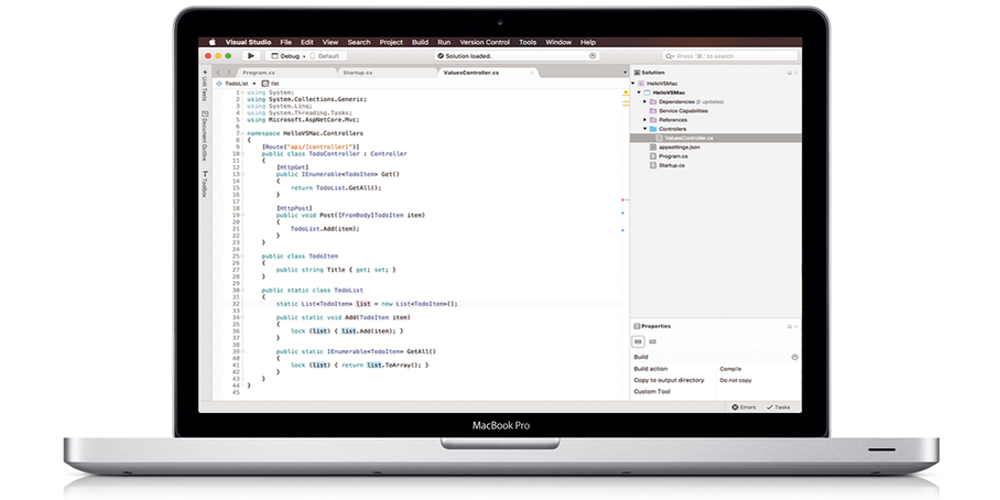Back in .NET Conf 2017 The Xamarin team already shared what’s going to be new with Xamarin Forms 3.0 and it actually surprised me. I was expecting some performance improvements, bug fixing and a big upgrade on XAML. But, what they announced focuses on enabling the usage of Xamarin.Forms in more ways and on more platforms. I was really hoping for XAML improvements, maybe add some cascading styling like how CSS works. Maybe sometime in the future, we’ll get it. For now, I’ll just use the XAMLCss by warapa. Anyway if you want to watch all sessions from .NET Conf 2017, you can check it out on Channel9. Going back, I really didn’t expect these new features, but definitely, I love it and really excited to try it out!
That’s why right now, I’m going to show to you one of the exciting features added to the Xamarin.Forms 3.0 that I think you’ll also love. I’m talking about Xamarin.Form’s macOS support.
One of the Xamarin team’s plan is to reach more platforms. That means UWP, iOS and Android are not only platform the Xamarin.Forms will be able to target from now on, they are also bringing macOS, GTK#, Linux and WPF!
You might think that it will be hard and will take a lot of time to integrate your Xamarin.Forms solution into the macOS project, but it’s not. Not at all. You’ll be able to create a native macOS application using your Xamarin.Forms solution using Visual Studio for Mac or Xamarin Studio in just 3 quick steps!

First step: Add a Cocoa App project
In the past, I’ve published posts about how to set up nRF52 development for Netbeans and Segger Embedded Studio. Today, I will be walking you through a similar tutorial for setting up Visual Studio Code for nRF52 development on macOS. So, why use a tool that was created with embedded programming in mind for nRF52 development? It's worth noting the new.NET Core is cross-platform, as is the 'Visual Studio Code' editor, which also now supports debugging. Thus, if you install Visual Studio Code and.NET Core on a Mac in OS X you can quite freely edit and compile and run and debug and share your code with Visual Studio 2017 on a PC. – DavidMWilliams Feb 2 '17 at 5:16. Visual Studio Code on macOS Installation. Download Visual Studio Code for macOS. Open the browser's download list and locate the downloaded archive. Select the 'magnifying glass' icon to open the archive in Finder. Drag Visual Studio Code.app to the Applications folder, making it available in the macOS Launchpad. Our goal with Visual Studio 2022 for Mac is to make a modern.NET IDE tailored for the Mac that delivers the productive experience you’ve come to love in Visual Studio. We’re working to move Visual Studio for Mac to native macOS UI, which means it will come with better performance and reliability.
Right now, Xamarin.Forms template doesn’t have a Cocoa App initially. So, what you would do is to start Visual Studio for Mac or Xamarin Studio and open your existing Xamarin.Forms solution. Then, add a project into the solution by right-clicking the solution and selecting Add > Add New Existing Project.

You can then select Mac > App > Cocoa App and name it whatever you want, but ideally, the name has a suffix of .macOs.
Second Step: Add the Xamarin.Forms NuGet Package
You will have to add the Xamarin.Forms’ latest pre-release nuget package or specifically 2.4.0.282. To do this, right click the Cocoa App project that you just created and select Add > Add Nuget Packages.
Then, search for ‘Xamarin.Forms’ and make sure that the ‘Show pre-release packages’ is ticked. Click ‘Add’ to add Xamarin.Forms nuget package.
You will also need to update the Xamarin.Forms on your shared project and the version should be the same with what the Cocoa app have.
Third Step: Configure the Cocoa App Project

The first thing that you should do with your Cocoa app project is to add the shared project into your Cocoa app as a reference.

Then, open the Info.plist and remove the ‘Main storyboard file base name’ entry (Opened with XCode)
Visual Studio Macos Arm
Or just open the Info.plist inside Visual Studio or Xamarin Studio by clicking it and leave the Main Interface blank.
The next one is to update your Main.cs’ Main method to initialize the AppDelegate:
Lastly, update the AppDelegate by changing the NSApplicationDelegate to FormsApplicationDelegate:
Visual Studio Mac Python
Initialize the Cocoa app window within the constructor:
Then inside the DidFinishLaunching method, initialize Xamarin.Forms and load the application:
Microsoft Visual Studio For Mac
You can now set your project as the startup project and run your macOS!
Again, in just 3 quick steps, it’s done!
This is just a basic walkthrough since this is still on preview. Expect that there are still bugs and not ready for production. Not all nuget packages are compatible and surely, there are lots of UI features still not implemented, but this is a good start. For now, you can send your issues and problems that you encounter in this forum discussion: https://forums.xamarin.com/discussion/93585/preview-xamarin-forms-for-macos/p1
